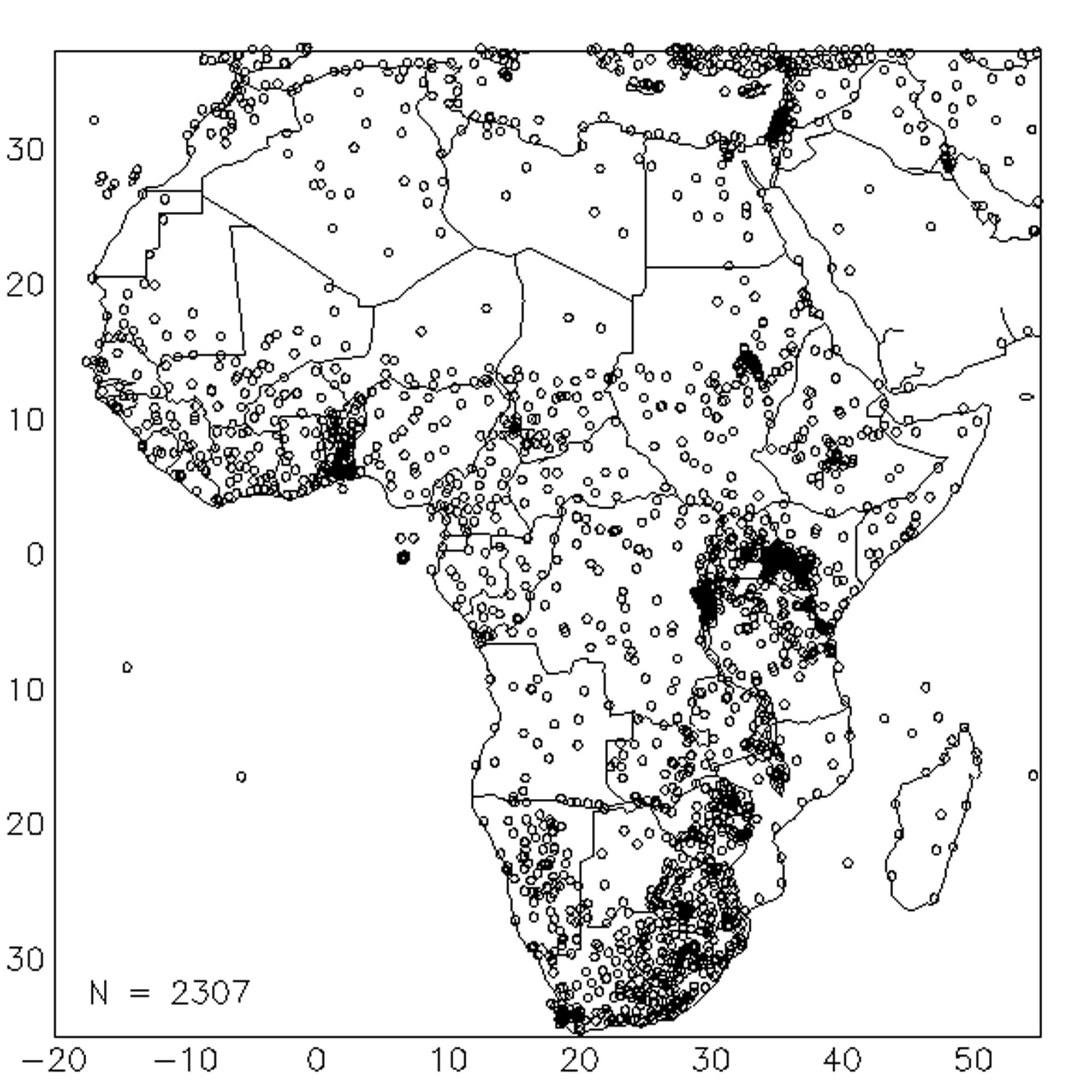(Difference between revisions)
| Revision as of 11:09, 15 June 2006 Peter (Talk | contribs) ← Previous diff |
Revision as of 11:12, 15 June 2006 Peter (Talk | contribs) (→'''Two basic modelling options''') Next diff → |
||
| Line 13: | Line 13: | ||
| * An irregularly spaced network based on real-world stations. As an example below part of the rainfall recording stations in Africa. | * An irregularly spaced network based on real-world stations. As an example below part of the rainfall recording stations in Africa. | ||
| - | [[Image:graph5.jpg]] | + | [[Image:graph5.jpg|frame| Rainfall stations in Africa]] |
Revision as of 11:12, 15 June 2006
Two basic modelling options
A crop monitoring program has to be based on data from different locations inside the country of region that needs to be monitored.
Technically these monitoring locations are points. Points can be pinpointed at the earth’s surface with coordinates. The coordinate system that is used in crop forecasting is called a geographic coordinate system whereby the coordinates are expressed in Longitude - Latitude pairs.
Example : the geographic coordinates of Pnom Penn (Cambodia) are:
- Longitude: 104.917445
- Latitude : 11.558831
Normally expressed as 104.917445, 11.558831 (longitude always first). Read more: Geographic Coordinates
Depending on the circumstances crop forecasting can be undertaken in
- An irregularly spaced network based on real-world stations. As an example below part of the rainfall recording stations in Africa.
- A regularly spaced grid (sometimes called raster). In this case, grid points do not coincide with meteorological stations.
Within the crop forecasting tools these locations are
When setting up a crop monitoring program two basic approaches exist
gridding before modelling, and modelling before gridding. Advantages and disadvantages in terms of errors, labour and accuracy of forecasts.

